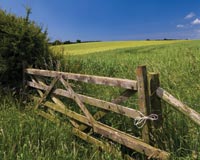 An archaeologist who sought to have development land near York protected as the site of the historic first battle of 1066 has been refused permission to appeal his court defeat last year.
An archaeologist who sought to have development land near York protected as the site of the historic first battle of 1066 has been refused permission to appeal his court defeat last year.
Richards LJ refused to grant permission in the legal challenge to English Heritage’s decision not to designate land owned by Persimmon Homes in Fulford, York, as the site of the Battle of Fulford.
Doing so, he praised archaeologist Charles Jones for his impressive and commendable enthusiasm and effort, but ruled that the appeal did not stand a reasonable prospect of success.
In a further boost to development plans for the site, he also rejected Fulford Parish Council’s bid to appeal in its challenge to City of York council’s grant of planning permission to Persimmon and Hogg Builders (York) for 655 homes on the site.
He said that his decision would bring the case “to an end at last – a long time after it should have ended”.
Mr Jones – who has carried out archaeological works on the site since 1988 and authored the book Finding Fulford – had sought a ruling forcing English Heritage to reconsider whether to add it to its Battlefield Register, alongside other 1066 battles at Hastings and Stamford Bridge.
English Heritage had concluded that, while the site alongside watercourse Germany Beck was the most likely location of the Battle of Fulford, the archaeological and other evidence was insufficiently conclusive.
Dismissing the case last year, Lindblom J said that EH’s basic judgment was unmistakeable, and that the location of the battle had not been “securely identified”.
R on the application of Jones v English Heritage Court of Appeal (Richards LJ) 4 February 2014







